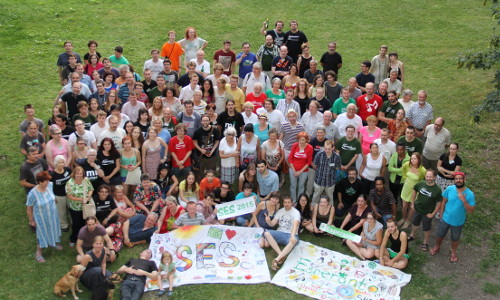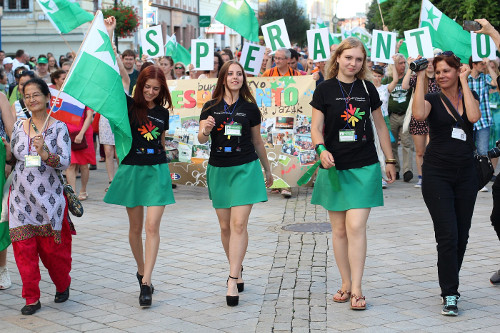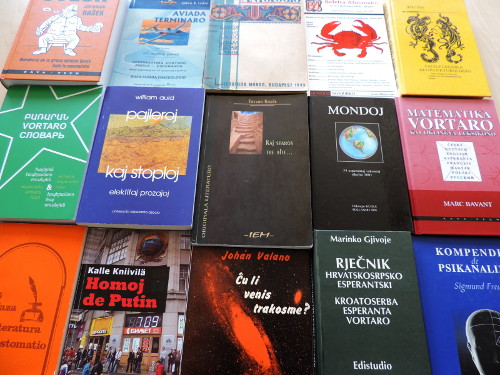Esperanto
Esperanto (originally: Lingvo Internacia) is the most widespread international planned language in the world. The name of the language comes from pseudonym "Doktoro Esperanto" under which Doctor Ludwik Lejzer Zamenhof published the language’s linguistic foundations in 1887. The Russian version of the first book about the language was passed as acceptable by the censorship board and allowed to be published on the 26th of July. To this day, that date is considered the birthday of Esperanto. Zamenhof sought to create an easy-to-learn, user-friendly neutral language, suted for use in internationa communication. He succeeded! The goal of the language was never to replace other languages, but rather to work alongside them, as a righteous and accessible tool for transnational communication.

No country has accepted Esperanto as an official language. However, Esperanto has been featured on the official state education curriculums of a number countries, such as Hungary and China. The international community who use Esperanto number somewhere between a hundred thousand and two million speakers. The exact figure varies according to various sources, and of course relates to the language proficiencies of the speakers. Native speakers number between 1000-2000. Of course any official census would be a mammoth task to conduct.

The international recognition of Esperanto is demonstrated by two UNESCO resolutions, as well as the support of well-known members of society. Esperanto continues to be used for travelling, correspondence, intercultural exchanges, congresses, scientific discussions, literature (both translated and original), music, theatre, cinema, printed and internet reports, radio and television broadcasts.

The vocabulary of Esperanto mainly derives from western European languages, while it's syntax and morphology also bear influences from Slavic languages. Esperanto’s morphemes (the smallest meaningful units in the language) do not change, and so there is an almost infinite combination of the affixes and linguistic components; speakers of Esperanto are able to create and to understand an almost limitless number of words. In this way, Esperanto shares many similarities with the Analytical category of languages, for example Chinese. The internal structure of Esperanto also reflects the Agglutinative category of languages, such as the Japanese, Swahilian or Turkish.

There are major advantages to learning Esperanto over other languages. It can be learned much more quickly and easily than national languages. Specifically, studies hold that it may be between five to ten times easier. It is possible to attain a solid conversational level within three to six months. It is easily attained, even by self-study (which for most other languages is usually really hard, even impossible). Who would want to learn Esperanto? Well it has been learnt by people from diverse backgrounds. The Esperanto movement is active in over 120 countries.
Links to get to know the language
- General information about Esperanto on Wikipedia (The website interface language can be changed using the menu on the right of the screen.)
- The history of Esperanto
- The Esperanto Movement
- The grammar system
- Esperanto literature
- A video "Esperanto is..."
- Esperanto – Building a Language Bridge
Links for learning Esperanto
- "lernu!", the most popular site for learning Esperanto
- Duolingo, la plej populara senpaga retejo por lerni multajn lingvojn inkluzive de Esperanto (kurso disponebla en la angla, franca, hispana kaj portugala; kurso en la ĉina preparata)
- A free programme for learning Esperanto
- Learn Esperanto through the efficient and popular Zagreb's method
